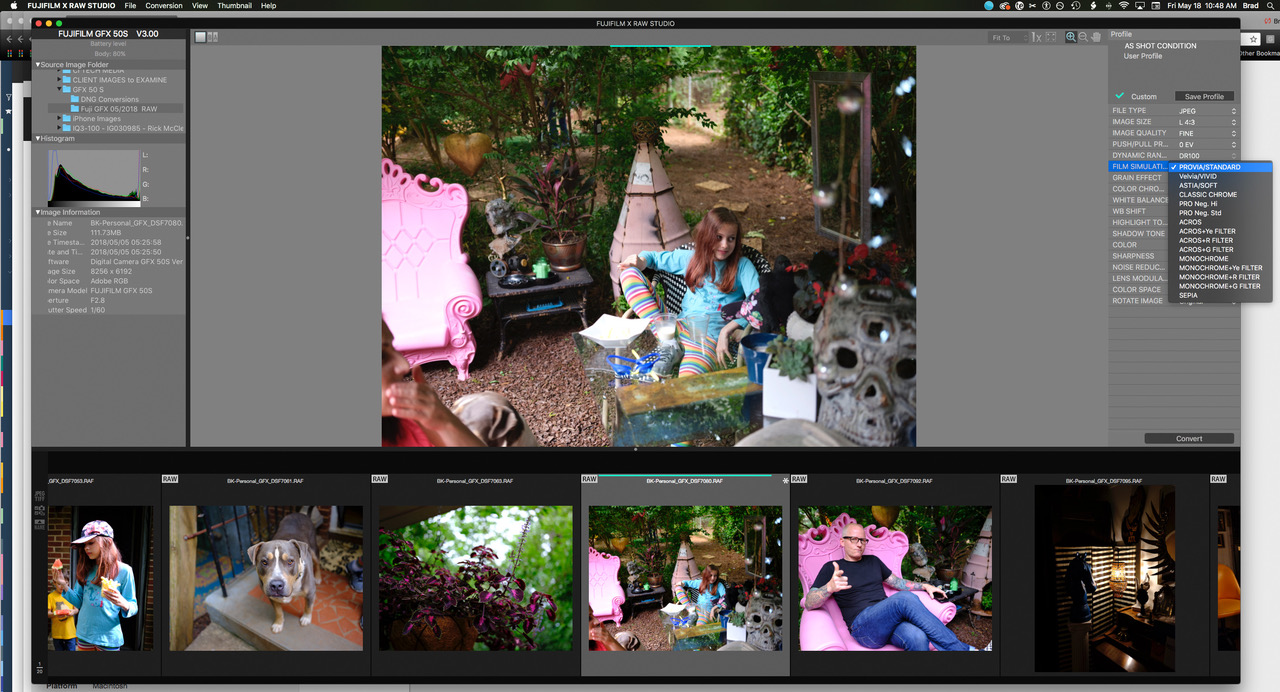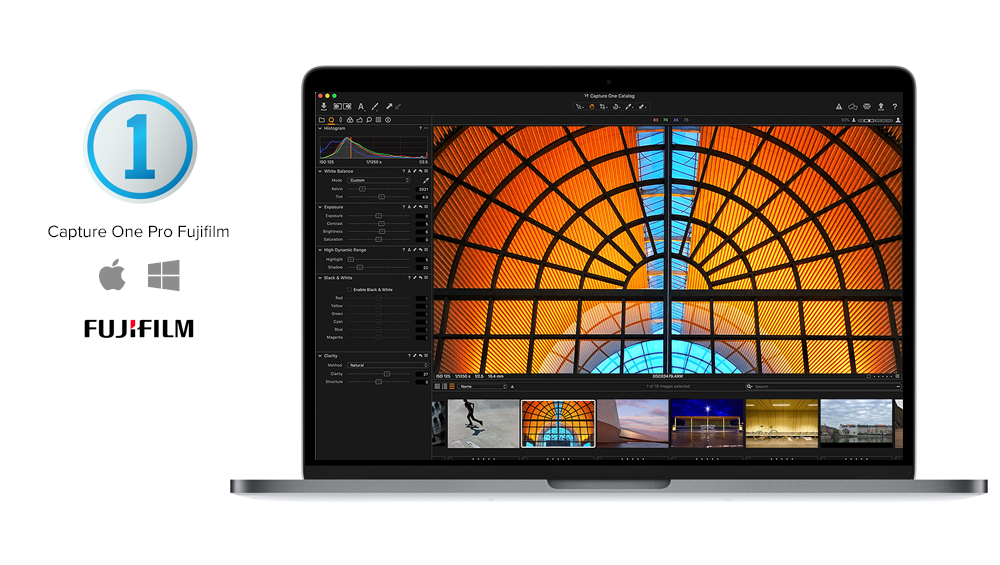If you are an editorial, portrait, product, landscape or commercial photographer, there is a great chance you’ll be needing fujifilm tethering to Capture One Pro once in your professional career. You might want to show your work directly to your client, or through the computer to avoid the small screen and apply some settings.
- Capture One Express Free
- Capture One Express For Fujifilm
- Capture One Free Fujifilm
- Capture One Pro Fujifilm Free Download
- Capture One Free Fujifilm Download

The fujifilm tethering is the ideal way to allow your client, art director, or the whole team to see the work on a larger screen, with images displayed live, with or without a specific development mode applied.
This article will clear things up for those of you who might want to try but find it really complex. How to configure the Fujifilm bodies, how to connect to Capture One Pro, and what we can now do with it (further versions of Capture One Pro and firmware updates from Fujifilm will soon allow more features).
Fujifilm tethering to capture one step by step On your Fujifilm Camera, open the menu and go to Tools. Connection settings. Set it to USB Auto or USB Fixed; Then connect your USB cable to your camera (if you try beforehand it won’t work), and to your computer. FREE BONUS: e-book chapter about Styles and Presets. Capture One for Fujifilm 21. Capture One for Fujifilm exclusively support files from Fujifilm cameras. Check your camera’s compatibility. What are the system requirements? MacOS 10.13, 10.14, or 10.15.
Gear needed
First of all, you need some gear, basically what you need is a cable to connect your computer to your camera, the rest is a nice to have, makes life easier, but it’s not necessary to start tethering.
I personally use Tethertools cables to connect my fujifilm X-H1 or my Fujifilm X-T3 to my computer. In my case I need the USB-C to USB-C for one camera, and USB-C to USB-3.0 for the other. But one important thing to take into consideration when buying the cable is to get one long enough. We often start with a short one, but it’s too short from day 1. Go for the 4.6 meter one, the longest from Tethertools, you’ll never be bothered by it being too long, but you’ll always be missing it if you purchase the short one when shooting through any tethering such as in this case fujifilm tethering.
Nonetheless, in the setup i’ll be showing below, i set it up with my Apple USB-C to USB-C cable from my computer, the shoot was going to last 1-2 hours, the computer lasts for 10, I knew i was safe and didn’t have any problem tethering that way over my tripod.

Fujifilm tethering to capture one step by step
- On your Fujifilm Camera , open the menu and go to Tools
- Connection settings
- PC Connection
- Set it to USB Auto or USB Fixed
- PC Connection
- Connection settings
- Then connect your USB cable to your camera (if you try beforehand it won’t work), and to your computer.
- Finally, once the cable is connected to camera and computer, you can open Capture One Pro
- Go to the Tethering tab and you’ll see your camera and all the settings… you’re done and ready to shoot !
From now on, you can shoot and you’re tethering to your computer. Furthermore you can shoot by pressing the shutter from CaptureOne Pro or from your camera, both will work and images will be transferred directly. However, at this stage you can’t set film simulations nor can you set the speed, aperture from Capture One, you’ll have to do that from the camera.
My setup for fujifilm tethering to Capture One
- Fujifilm X-T3 or Fujifilm X-H1
- Stable & Solid tripod
To assist you in your first setup and trying tethering with your fujifilm camera, you’ll find a simple setup. I use the gear listed above to create a single post, on location, tripod based tethering station. In this case i’m just using my iPhone cable as mentioned above, it works perfectly for shoots requiring compositing for example.
Hoping that this post can be useful to you, and can make it easier for you to try some fujifilm tethering with capture one pro and your fujifilm cameras, I wish you a lot of pleasure in your shoots, and look forward to meeting you through my website, by comments at the bottom of this article, by the newsletter, by email or simply in real life. Do not hesitate to leave me a message, I will answer you with pleasure.
I wrote a blog post earlier this year about why I switched to Capture One for image editing, after over a decade of using Lightroom. Here’s the summary:

- I liked Lightroom’s workflow but the software started to get messy throughout the years as they added features without optimizing it
- Lightroom lacked in color controls; Capture One excels in color, and color is extremely important
- Fujifilm RAW files couldn’t be adequately demosaiced in Lightroom; Capture One handled them better (that worm thing?)
- I could do in Capture One what I needed extra plugins and software programs for working with Lightroom
- I would miss Lightroom’s excellent cataloging features
A couple of weeks ago, Phase One (makers of Capture One) announced a collaboration with Fujifilm.
Phase One is known for their medium-format digital backs for professional cameras. Capture One was developed to handle these detailed, beautifully-rendered large files.
Per their press release, “We are proud to be working to share with Fujifilm shooters the opportunity to benefit from Capture One’s highly responsive processing engine, unmatched color handling, precision-editing tools, and seamless tethered support.”
Capture One Fujifilm
Fujifilm has kinda skipped the full frame camera market and focused on APS-C and medium format sensors. This is why it’s so exciting that Phase One is collaborating with them. It will unleash the full potential of Fujifilm’s awesome sensors coming out in their more affordable medium format cameras, as well as their amazing APS-C sensors.
Capture One is offering two versions of their software specific to Fujifilm cameras. I’ve summarized them below, but for a full comparison between Capture One Express and Capture One Pro, check out their chart here.
Capture One Express Fujifilm
Capture One Express Free
A “lite” version of Capture One Fujifilm will be available with all Fujifilm cameras (yes, free!). This can be likened to your basic RAW file editor, allowing you to change basic color, contrast, and toning, as well as cataloging. Fujifilm previously had their own RAW editor included with their cameras; Capture One will be a powerful addition.
Capture One Express For Fujifilm
This version, Capture One Express Fujifilm, will provide RAW support for all Fujifilm cameras. It also includes what you would call a “style pack” – Fujifilm’s 16 in-camera film simulations (Velvia, Provia, Classic Chrome, etc) can be applied to your RAW files in Capture One (future release).
I think I mentioned this already, it’s free.

Capture One Free Fujifilm
Capture One Pro Fujifilm
Capture One Pro Fujifilm Free Download
For photographers who only shoot Fujifilm, you have the option to purchase a “complete” version of Capture One Pro, but only with Fujifilm support.
Aside from full editing capabilities, this version will also give you tethering capability. Zoom, pan, compose, and capture through the software or mobile device. “Live view” tethering will be available for the professional cameras (GFX, X-H1, X-T3, X-T2, X-T1, X-Pro2).
This version of the software doesn’t cost much less than the full version ($159 per year vs $180). So if you have RAW files in other formats, or anticipate that you might in the future, you might as well get the full version of Capture One Pro. You can also purchase a perpetual license for $299, which includes support and updates “forever”.
Capture One Free Fujifilm Download
If you’re a Lightroom user and still on the fence, Capture One offers a free trial period with complete functionality for 30 days.
